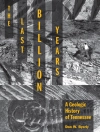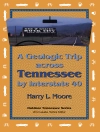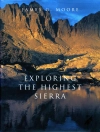Pyrometamorphism occurs at very high temperatures (800 – > 1000 °C) and low pressures (< 2 kb) and typically results in the formation of ‘burnt’ and fused rocks termed buchites, paralavas, clinkers and fulgarites. It is typically associated with shallow basaltic intrusions (contact aureoles, xenoliths, ) combustion of carbonaceous matter, lightning strikes, and is also found in meteorites. During pyrometamorphism, the sequence of heating and cooling is greatly condensed favouring the preservation of a variety of stranded reaction microstructures that reflect disequilibrium reaction kinetics with metastable and mineral crystallisation.
Mục lục
Introduction.- Thermal Regimes and Effects.- Quartzofeldspathic Rocks.- Calc-Silicates and Evaporites.- Mafic Rock.- Anthropogenic Pyrometamorphism.- Mineral Breakdown Reactions. Chapter 1 Additional terms and discussion from IUGS Subcommission on Systematics of Metamorphic Rocks (Contact metamorphism) Chapter 2 Further details on thermal regimes of combustion metamorphism and lightning strike pyrometamorphism + 1 diagram (various sources) Chapter 3 Additional example of pyrometamorphism of granitic rock by basalt + 1 diagram Additional examples of combustion metamorphism of quartzofeldpathic rocks + siderite from Siberia, New Zealand, Ellesmere Island (Canada) + 3 diagrams Additional material on paralava compositions Chapter 4 Additional pyrometamorphic examples of marl rocks from Israel + 3 diagrams Additional information on paralava compositions + 2 diagrams Example of lightning strike pyrometamorphism of carbonate rock Chapter 5 Additional example of pyrometamorphic recrystallization of basalt xenoliths + 1 diagram Additional example of lightning strike fusion of basaltic rock Chapter 6 Additional examples of pyrometamorphic minerals in carbonate mudstone bricks/kiln artifacts New section on biomass pyrometamorphism: ‘tree stones’ and slag/clinker as a result of forest fires, burning dung heaps, plant waste, straw, gorse, etc., + 2-4 diagrams; industrial biomass incineration products, wood ash + 1 diagram Additional examples of slag formation + 1 diagram Additional example of artificial fulgurite from Portugal + 1 diagram Experimental fulgurite formation + 1 diagram Chapter 7 Additional photo of hornblende breakdown Additional information on garnet breakdown + 2 diagrams Additional information on staurolite breakdown + 1 diagram












